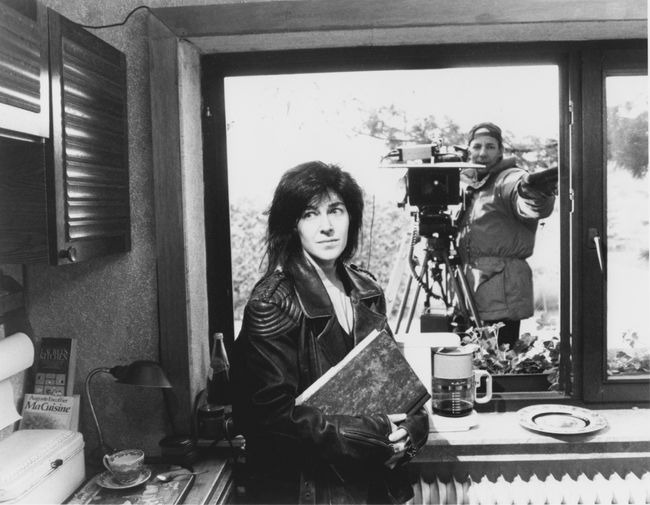On Becoming
20 January 2020
IFFR Young Curator Darunee Terdtoontaveedej on Sacred Beings
In 2018, Malaysian prime minister Mahathir Mohamad said to an audience of university students, “At this moment, we do not accept LGBT but if they [the West] want to accept it, that is their business. Don’t force it on us.” He was implying that sexual and gender expression outside the heteronormative standard is a value imported from the West and incompatible with Asian cultures. Perhaps like many other leaders in the region, Dr Mahathir has been suffering from post-colonial amnesia, a common excuse to continue with the colonial penal code section 377, implemented by the British in all its colonies, which prohibited homosexual acts between consenting adults; the ban has also been extended to transgender people.
Sacred Beings
Long before the Europeans had set foot in Asia and other parts of the world, gender expressions and performance beyond the binary were part of religious rituals and practices in some cultures. Transgender and intersex individuals were considered sacred, as they embody both male and female identities, making them closer to God. Examples include the Bissu priests in the Bugis culture in Sulawesi, the Hijras in South Asia, and the Nat Kadaw in Myanmar. The Sacred Beings programme brings together different characters from various Asian contexts by forming a contemplative space at the core of the programme at Het Nieuwe Instituut, with the intention of encouraging new perspectives and imaginings on gender fluidity.
The installation combines a multi-disciplinary work by an artist, a photojournalist, a filmmaker and an academic. Blending together fact, fiction and fantasy, Sacred Beings brings together archival imagery; personal documentation of research fieldwork by Associate Professor Sharyn Davies, who has spent the last two decades studying gender plurality within the Bugis culture; and speculative scenarios of queer resistance, presented in Sarnt Utamachote’s multi-screen video work illustrating the rejection of colonial exploitation.
This rejection of Western standards and heteronormativity is also present in the delicate photographs of young people in the middle of self-discovery and development, hidden underneath their rigid school uniforms, documented by Watsamon Tri-yasakda, and depicted together with Tatsuhito Utagawa’s black-and-white film capturing the sensuality of Khmer classical dancer Prumsodun Ok’s bodily and spiritual movements to the sound of a prayer. The various contexts of the characters question the meaning of the word ‘sacred’. Can we still imagine a world where the existence of queer is seen as sacred rather than a deviation in a contemporary context?
Bodily Rituals
While gender identities beyond the binary are seen as a recent and Western phenomenon, is it perhaps a sign that the West might be catching up with the rest? In 2019, the singular ‘they’ was chosen as Word of the Year by American dictionary publisher Merriam Webster. The word not only signifies a seemingly new gender-neutral pronoun, but it is also a word that embodies inclusivity, an important milestone for the queer community. Despite the increasing use and popularisation of ‘they’, many still struggle with their daily vocabulary, particularly in many other European languages. It proves how highly structured Western societies are, when much of the vocabulary in Latin-root languages is characterised by gender; for example, in French a chair is female while a bed is male.
Accompanying the installation is the short film programme Bodily Rituals, which combines six short films on the fluidity of being. Each film meditates on the limitless possibilities of transformation, whether it subverts and reimagines personal histories of a Chinese hero in Wu Tsang’s epic work Duilian, or traces the colonial influence on the perception and the paradigm of masculinity, illustrated in Samoan artist Tanu Gago’s mesmerising work Apparatus. The central theme in the compilation is the notion of ‘body building’ – the transformation and fluidity of the body and the soul, taking shapes and becoming others, seeking to add a counternarrative to the gendered construction of our society.
Becoming Another
The installation can be seen from Thursday 23 January at Het Nieuwe Instituut, but the actual opening of the Sacred Beings programme takes place on Sunday 26 January with a conversation between the filmmakers and artists about perspectives on gender outside Western culture, hosted by Mongolian queer rights advocate Anaraa Nyamdorj. It ends with a shape-shifting act performed by Raoni Muzho Saleh as an invitation to reimagine what our bodies and spirits are capable of. The acts of morphing, avataring and queering bring attention to our multiple selves and to imagining the world as a different place – free of rigid binary structures, where the ‘sacred’ lies within ourselves.







